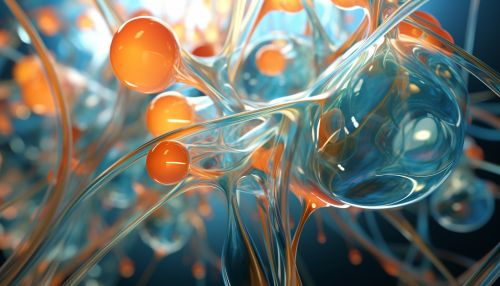Chemical synapse
Overview
A chemical synapse is a specialized junction through which neurons signal to each other and to non-neuronal cells such as those in muscles or glands. Chemical synapses allow neurons to form circuits within the central nervous system. They are crucial to the biological computations that underlie perception and thought. They allow the nervous system to connect to and control other systems of the body.


Structure
The typical chemical synapse consists of two parts: a pre-synaptic ending that contains neurotransmitters, mitochondria and other organelles, and a postsynaptic ending that contains receptor sites for these neurotransmitters. These two structures are separated by a synaptic cleft. The pre-synaptic part is located on the axon terminal of a neuron, while the postsynaptic part resides on the dendrite of another neuron.
Function
The function of the chemical synapse is to convert an electrical signal in one neuron into a chemical signal that can cross the synaptic cleft and be converted back into an electrical signal in another neuron. This conversion is achieved through the process of neurotransmission, primarily involving the neurotransmitters.
Neurotransmission
Neurotransmission, also known as synaptic transmission, is the process by which signaling molecules called neurotransmitters are released by the axon terminal of a neuron (the presynaptic neuron), and bind to and activate the receptors of another neuron (the postsynaptic neuron).
Neurotransmitters
Neurotransmitters are endogenous chemicals that enable neurotransmission. They transmit signals across a chemical synapse, such as a neuromuscular junction, from one neuron (nerve cell) to another "target" neuron, muscle cell, or gland cell.
Synaptic Plasticity
Synaptic Plasticity is the ability of synapses to strengthen or weaken over time, in response to increases or decreases in their activity. This dynamic process is believed to be critical for learning and memory.
Clinical Significance
Chemical synapses are essential for brain function, but can be affected by various medical conditions. These include neurological disorders such as Alzheimer's disease, Parkinson's disease, and multiple sclerosis, as well as mental health conditions such as depression and schizophrenia.
